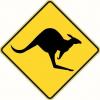I just finished a Schwarz Holtzapffel style bench build, which was very much a learning experience for me. It was my first "real" workbench, and I'm very happy with how it came out. The top is 3" thick laminated doug fir, 6' by about 28". I'm sticking with the 10" Record-style quick release vise as an end vise as per the plans, positioned as close as possible to the front without hitting the leg, but I have a few questions on the dog holes that I'd really appreciate some thoughts on. I've done a lot of searching on various forums for opinions and haven't really found a definitive answer (I'm guessing there is not a definitive answer, but nevertheless...).
I've attached a thick wood jaw to the end vise (the jaw is roughly 13" in length), so I can drill a dog hole anywhere in it, and drill a row of dog holes on the bench top in line with that. If I were to put the dog holes in line with vise screw, that puts them back roughly 6 3/4" from the front edge of the bench. I know many folks say that's too far back, and I can see the logic in that. If I were to put them say 2" from the front edge instead, then the holes are about 5" offset from the vise screw, which will obviously cause some racking when clamping a board for surface planing, etc.
So my questions...first, how much does a little bit of racking matter in practice? I guess my main concerns would be gradual damage to the vise over the long term or work constantly popping out of the dogs because of the skewness. I've done some mock up testing and it seems like the amount of skew would be minor (maybe 1/8" end to end) to get enough clamping pressure for planing with dogs at 2" in. But I don't know what the long term effect on the vise would be. Lots of folks seem to say racking is bad for a vise, but I'm not really sure exactly how...do the guide bars bend, or does it loosen up? There definitely seems to be a better hold in general with dogs in line with the screw, however.
And secondly, given that I'm not a dedicated hand tool guy, if I'm not often using fenced planes, how much does it even matter if the dog holes are very close to the edge? I do have an old fenced rabbet plane, but would honestly most likely just plop a board on my router table for that (at least, at this point in my life).
My current thinking is to stick with the dog holes in line with the vise screw for now (as per the original Schwarz plans), which would also double as the front row of holdfast holes. If down the road I find I need them closer, I can add another row, in which case the original row would still be used for holdfasts, so wouldn't be a waste. Although since this bench will also be used for many things other than straight woodworking, I'd rather not have any more holes than needed. A possible annoyance of only having the closer row would be having to skip holes were the legs are.
But I keep changing my mind...I sort of suspect either way would be fine for my purposes and I'm overthinking it. Any insights would be appreciated!
Pete




 Reply With Quote
Reply With Quote





